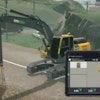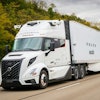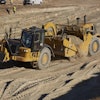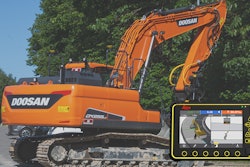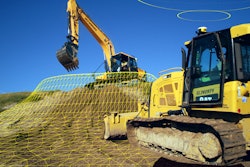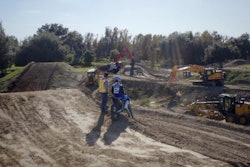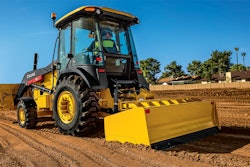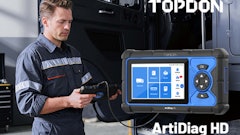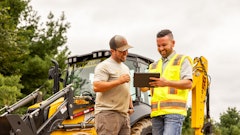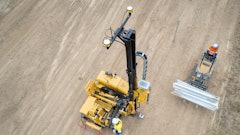
In the midst of the Covid-19 crisis, construction contractors, business owners and fleet managers still need to manage their fleets, but may not want to go to the office daily and risk possible exposure to themselves or others. Fortunately, by using technology offerings like a real-time GPS vehicle tracking system via a smartphone, tablet or PC remotely - in addition to email, Zoom meetings, etc. - they can socially distance as well as dynamically manage their fleets and work crews throughout the day without missing a beat.
In fact, compared to traditional techniques like meeting face to face and shuffling paperwork, the advanced technology now available actually improves control and allows immediate response and adjustment to the inevitable emergencies and changing demands that occur throughout the day.
“With an advanced, real-time GPS vehicle tracking system, essentially all employees can socially distance. To avoid potential viral transmission from other employees and vehicles, they can leave from their homes in their typical company vehicle and go directly to the jobsite without returning to the office, except to retrieve any needed supplies,” says Ben VanAvery, director of sales and marketing at Advanced Tracking Technologies (ATTI).
Such a GPS tracking system can facilitate social distancing and virtually eliminate the need for routine personal interaction, while ensuring that drivers and work crews stay on task.
Fast, Easy Logistics Management
When logistics during the pandemic require it, emergencies occur or work must be handled by the nearest qualified available technician, such a system can be very advantageous. With real-time GPS vehicle tracking, construction managers can see which technicians they have across the area, including who is nearest and who is experienced and properly qualified for the job. And by accessing real-time traffic data in the software, they can identify who is easiest to send to that location.
As an example, the Vision GPS vehicle tracking device from ATTI transmits 10-second updates, showing precisely where vehicles are the moment the construction fleet manager or dispatcher needs to know. In addition to real-time location updates, the system provide speed and idle time alerts if something is amiss. This data is transmitted via satellite and cellular networks to a smartphone or PC on a 24/7 basis. The system has access to nationwide speed limits in its database.
Dispatches can be made throughout the day and sent directly to the driver’s phone to tell the work crew the next jobsite address. Once they complete the job, it is recorded in the system so the dispatcher, owner or fleet manager can stay apprised. In that way, it can serve as a remote time sheet.
Robert Hanneman is business development/fleet manager for Chelsea, OK-based K&D Construction Services, a specialty foundation contractor serving the utilities market in a six-state area with a full suite of construction foundation services. He has already put such capabilities to use.
“We use GPS tracking to know where our equipment is so we can quickly get it to the next jobsite,” says Hanneman. “We use it when we schedule which jobs need which pieces of equipment to ensure that everybody gets what they need and nothing extra.”
He appreciates that he can use one system to track all of his construction fleet vehicles. “I did not want to look at multiple systems to see different things, with one set of trackers for the trucks and another for the skid steers and mini-excavators.”
Using an ATTI-approved PC or smartphone app, Hanneman can display the real-time location of his entire fleet on a map and zoom in on any specific vehicle. At a glance, he can see if a vehicle is moving (green) or stopped (red). If he touches a vehicle icon, the app will display where the vehicle has been, where it stopped and how long it has idled. All this helps with on-the-fly coordination.
“By zooming in or out on the map, we can see everything,” says Hanneman. “We can look where the different crews are and see what equipment they have with them in case we need to reallocate equipment to other places, depending on the job tasks.”
Hanneman notes that job tasks are not always the same from one jobsite to the next. “Maybe one crew has four skid steers, another has one, and I need to move skid steers around between the different crews,” he says.
“We have multiple crews working in multiple states, so being able to track where our vehicle fleet is in real time, 24/7, is a real advantage,” he states. “It also helps if we need to respond quickly to a need for emergency construction, such as for repair after a storm.”
To instill greater self-monitoring and efficiency during the pandemic, construction managers can also configure the system to automatically send real-time text or email alerts to individual drivers, groups or the entire fleet if factors such as traffic congestion, travel route, vehicle speed, starts, stops or idling pose a concern or deviate from policy.
Enhanced Efficiency and Safety
Advanced GPS tracking systems can also improve efficiencies on more established routes.
For example, because the GPS system is automated, travel reports can be generated that analyze vital historical data, such as on-time pick-ups or drop-offs, and can be emailed without anyone having to open software. The reports can be customized as needed to include as much detail as needed, such as how many stops, how long per location, top speed, mileage, idle times of the day, etc. Identifying and implementing more efficient routing and performance, in turn, enables individual drivers and the construction fleet as a whole to accomplish more in less time.
Such a system can also help individual drivers to drive more safely and take greater responsibility for their own conduct without the need to micro manage. A maximum vehicle speed of, say, no more than 8 mph over the posted limit can be set and drivers informed of this. The system will then track vehicle speed and compare this with the speed limit in its national data base, with exceptions automatically emailed to the driver and fleet manager in a report, if desired.
In addition, implementing real-time GPS tracking can increase driver accountability by making them less inclined to take unauthorized excursions, such as for personal errands, when not on a job. This can help to minimize unnecessary vehicle mileage, fuel use and wear and tear. GPS tracking can also be used to recognize and reward consistent on-time arrival, rapid response to any emergencies, etc.
For construction professionals, the bottom line is that today’s advanced GPS tracking systems can help to keep everyone as safe as possible, while still enabling optimal vehicle and crew management for work productivity.
